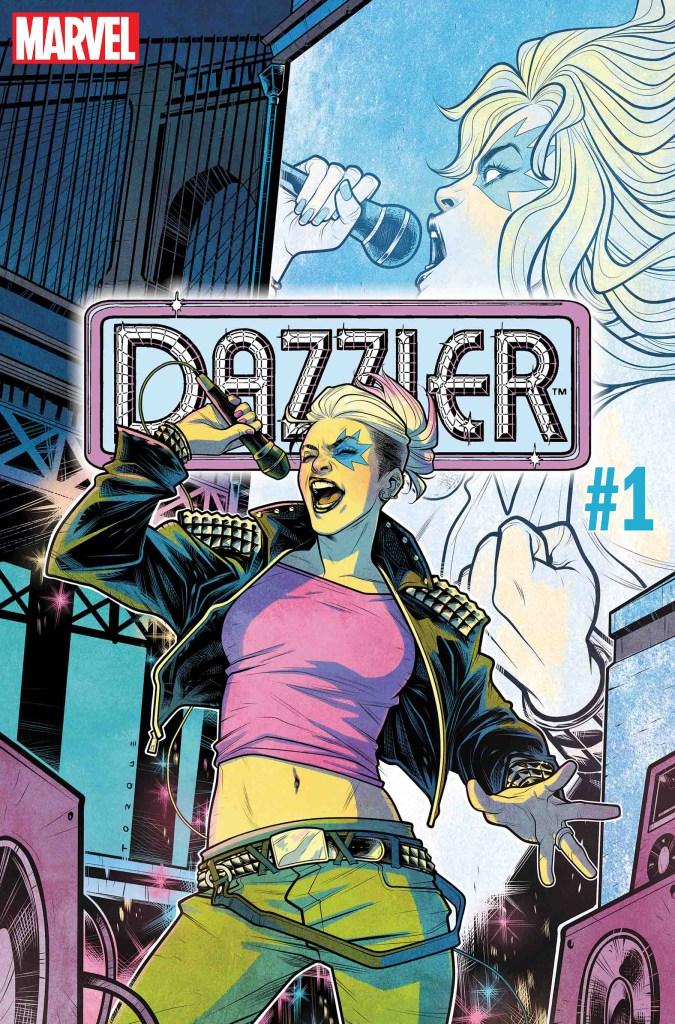Dazzler #1 Doesn't Dazzle, Doesn't Fizzle in Inclusivity-Themed Story
FTC Statement: Reviewers are frequently provided by the publisher/production company with a copy of the material being reviewed.The opinions published are solely those of the respective reviewers and may not reflect the opinions of CriticalBlast.com or its management.
As an Amazon Associate, we earn from qualifying purchases. (This is a legal requirement, as apparently some sites advertise for Amazon for free. Yes, that's sarcasm.)

Alison Blaire, aka Dazzler, was one of my favorite mutants, in an era where all of the mutants were my favorite mutants. Sure, she was a product of her disco-ball times, but the concept of being able to convert sound into light was a quantum theory twist I hadn't seen done before. I used to imagine the damage she could do teamed up with Songbird or (gulp!) Black Bolt. I even collected that less-than-stellar BEAUTY AND THE BEAST miniseries that teamed her pseudo-romantically with Hank McCoy.
So I was willing to see what Dazzler was up to in the twenty-teens, and the answer is: not much. Just chillin', just hangin' with the band, not being super and trying to stay out of trouble.
But let's start at the beginning. Like, with the cover. If you've picked up the standard cover (pictured here) by Elizabeth Torque, take heart: Dazzler looks nothing like this on the interior pages. Not that there's anything wrong with the artwork itself -- it's stlylish, well-drawn, and would look great as a representation of, say, Tank Girl or Miley Cyrus.
Opening the book and getting to the story, written by Magdalene Visaggio and drawn by Laura Braga, we get to the meat of the tale. The Marvel Universe has undergone a change in its demographics with the release of the Terragin Mists, and now there are more Inhumans than there are Mutants (and, presumably, more humans that either). This fundamental transformation to the order of things has caused some factions of mutants to turn aggressively defensive toward inhumans, which amounts to not wanting them to mingle in mutant safe spaces. Yes, the species Homo superior, which once fought for equality with Homo sapiens, is now represented as trying to exclude Inhomo supremis. It's an allegory, but that's obvious, and I won't bore you with all of that.
Central to the tale is Nora, an inhuman who can shoot bolts of light ("Holy Telegraphed Potential POC Legacy Character, Batman!") and her friend Zee, who are going together to a concert by Lightbringr (sic) and the Snikts. Lightbringr is Alison Blair, doing her best not to advertise that she was Dazzler but still dressing like she's fronting for The Holograms. Seriously, a whole week goes by in this book and she doesn't wipe off her makeup or change her clothes even once. But then again, neither do Nora or Zee. Your artwork is good, Laura, but pay some attention to the narrative. If you're not wearing a superhero uniform as part of your job, people tend to change their clothes from day to day, especially civilian people.
As the week progresses, Alison sees the "mutants only" crowd in regular attendance, and when they start to forcefully exclude inhumans, she steps in and puts the mutant hammer down on them -- with some backup vocal assistance from Nora and Zee. And she starts to give consideration to Colossus's repeated invitation to join the X-Men -- which, given the back-page solicit, may happen in ASTONISHING X-MEN #14.
It's not a bad story overall -- the X-Men and the mutant struggle was always a tale about the fight for equal rights and acceptance, and this continues in that tradition. But it wasn't a "wow" moment, either. Not something I'd expect out of a one-shot issue but rather from a backup short.


